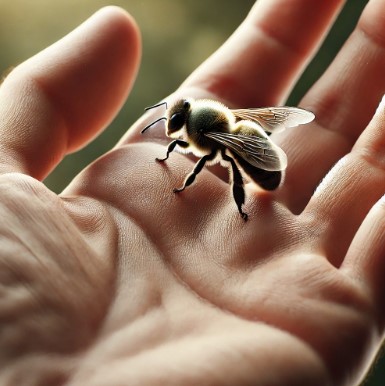
When a honey bee stings you, it releases venom through a stinger located at the end of its abdomen. Here’s what typically happens:
- Pain and Swelling: Right after the sting, you will experience sharp pain, followed by swelling and redness around the site. The pain typically lasts for a few minutes, and the swelling can persist for hours.
- Venom Release: When a honey bee stings, it leaves its stinger behind, and the venom continues to be released into the skin. The venom causes irritation, leading to the pain and swelling.
- Possible Allergic Reaction: In some cases, people might have an allergic reaction to the venom, which could cause symptoms like difficulty breathing, dizziness, or swelling in areas beyond the sting site. This is a medical emergency, and you should seek immediate help if these symptoms occur.
What to Do After a Sting:
- Remove the Stinger: If the stinger is still in the skin, gently scrape it out using a flat object like a credit card. Avoid using tweezers, as they can squeeze more venom into the wound.
- Clean the Area: Wash the sting site with soap and water to reduce the risk of infection.
- Ice Pack: Apply an ice pack or cold compress to reduce swelling.
- Apply Percy Homestead’s Sting B Gone Salve several times per day. Infused with the herb plantain Sting B Gone Salve will help with itching and swelling and can be used for any stinging insect bite.
If you are allergic to bee stings, or if the reaction seems severe, seek medical attention immediately.
